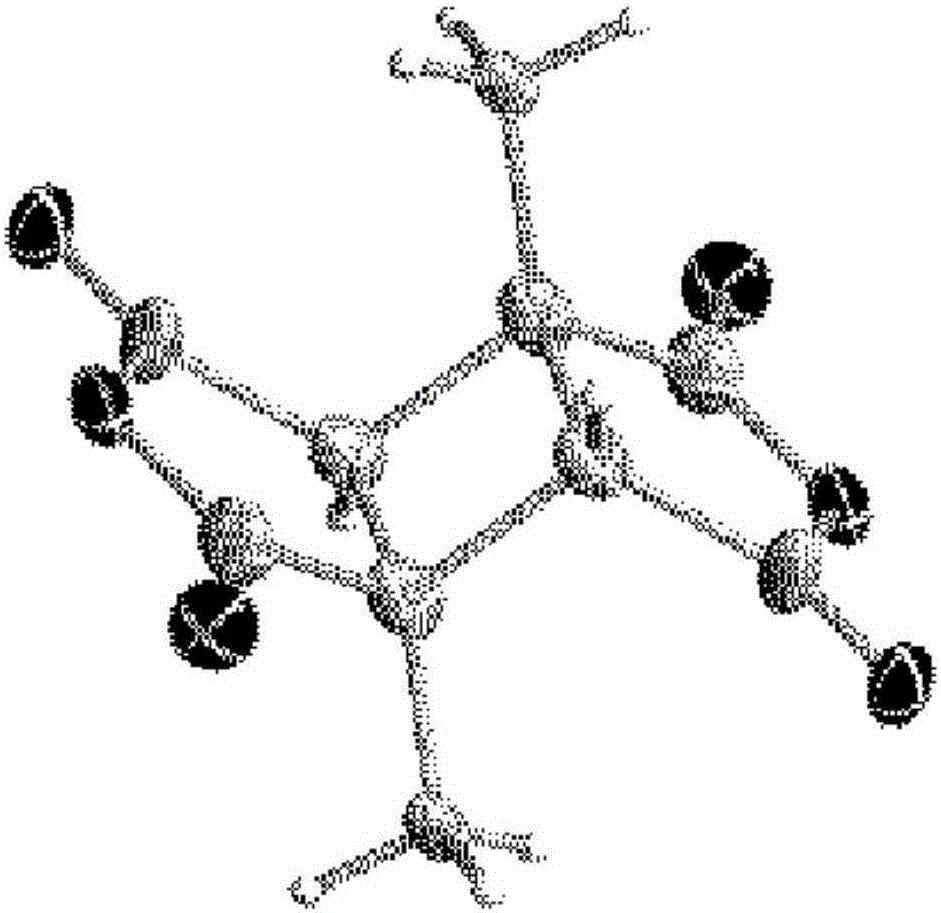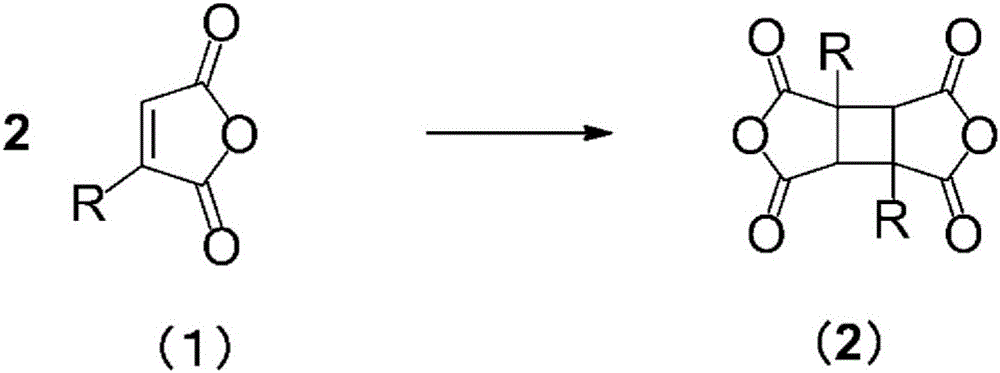Method for producing cyclobutane tetracarboxylic acid derivative
A technology of cyclobutane tetracarboxylic acid and its manufacturing method, which is applied in organic chemistry and other fields, can solve problems such as insufficient photoreaction efficiency and achieve high photoreaction efficiency
- Summary
- Abstract
- Description
- Claims
- Application Information
AI Technical Summary
Problems solved by technology
Method used
Image
Examples
Embodiment
[0073]The following examples are given to illustrate the present invention in more detail, but the present invention is not limited to these examples. In addition, the analysis method used in the Example is as follows.
[0074]
[0075] Device: GC-2010Plus (manufactured by Shimadzu Corporation),
[0076] Column: DB-1 (manufactured by Agilent Technologies, Ltd.) diameter 0.25 mm x length 30 m, film thickness 0.25 μm,
[0077] Carrier gas: He, detector: FID, sample injection volume: 1μL, injection port temperature: 160°C, detector temperature: 220°C, column temperature: 70°C (20min)-40°C / min-220°C (15min) , Split ratio: 1:50, internal standard substance: butyl lactate.
[0078] 1 H NMR analysis conditions>
[0079] Apparatus: Fourier transform type superconducting nuclear magnetic resonance apparatus (FT-NMR) INOVA-400 (manufactured by Varian Corporation) 400MHz,
[0080] Solvent: DMSO-d6, internal standard substance: tetramethylsilane (TMS).
[0081]
[0082] Device: D...
Embodiment 10
[0101]
[0102] Under a nitrogen atmosphere, 3.5 g (31.2 mmol) of citraconic anhydride (CA) and 0.70 g (3.23 mmol) of 4-chlorobenzophenone (ClBP) were charged into a 300 mL Pyrex (registered trademark) glass five-necked flask. Conic anhydride (CA) is 10 mol%) and dimethyl carbonate 136.5 g (1515 mmol, 39.0 wt times relative to citraconic anhydride (CA)) were stirred and dissolved with a magnetic stirrer.
[0103] Next, stirring at 10-15 degreeC, it irradiated with the 100W high-pressure mercury lamp for 1 hour. As a result of quantitative analysis of the reaction solution by gas chromatography after irradiation, the residual rate of citraconic anhydride (CA) was 69.1%. In addition, 0.2 g of the reaction liquid in the reactor was collected, and the solvent was distilled off at 70-80 Torr with an evaporator. pass 1 It was confirmed by H NMR analysis that the obtained crude product was a mixture containing 1,3-DM-CBDA and 1,2-DM-CBDA (1,3-DM-CBDA:1,2-DM-CBDA=44.6:55.4).
Embodiment 11~13
[0105] A series of operations were performed in the same manner as in Example 10, and the types of sensitizers were set to the values shown in the table below. In addition, the residual rate of citraconic anhydride, the reaction rate, and the production ratio of 1,3-DM-CBDA and 1,2-DM-CBDA were calculated in the reaction solution obtained here, and are shown together with the results obtained in Example 10. in the table. It should be noted that the reaction rates in the table were calculated from the number of moles of citraconic acid used and the residual rate of citraconic acid at the point of reaction for 1 hour.
[0106] [Table 2]
[0107]
PUM
| Property | Measurement | Unit |
|---|---|---|
| boiling point | aaaaa | aaaaa |
Abstract
Description
Claims
Application Information
 Login to View More
Login to View More - R&D
- Intellectual Property
- Life Sciences
- Materials
- Tech Scout
- Unparalleled Data Quality
- Higher Quality Content
- 60% Fewer Hallucinations
Browse by: Latest US Patents, China's latest patents, Technical Efficacy Thesaurus, Application Domain, Technology Topic, Popular Technical Reports.
© 2025 PatSnap. All rights reserved.Legal|Privacy policy|Modern Slavery Act Transparency Statement|Sitemap|About US| Contact US: help@patsnap.com



